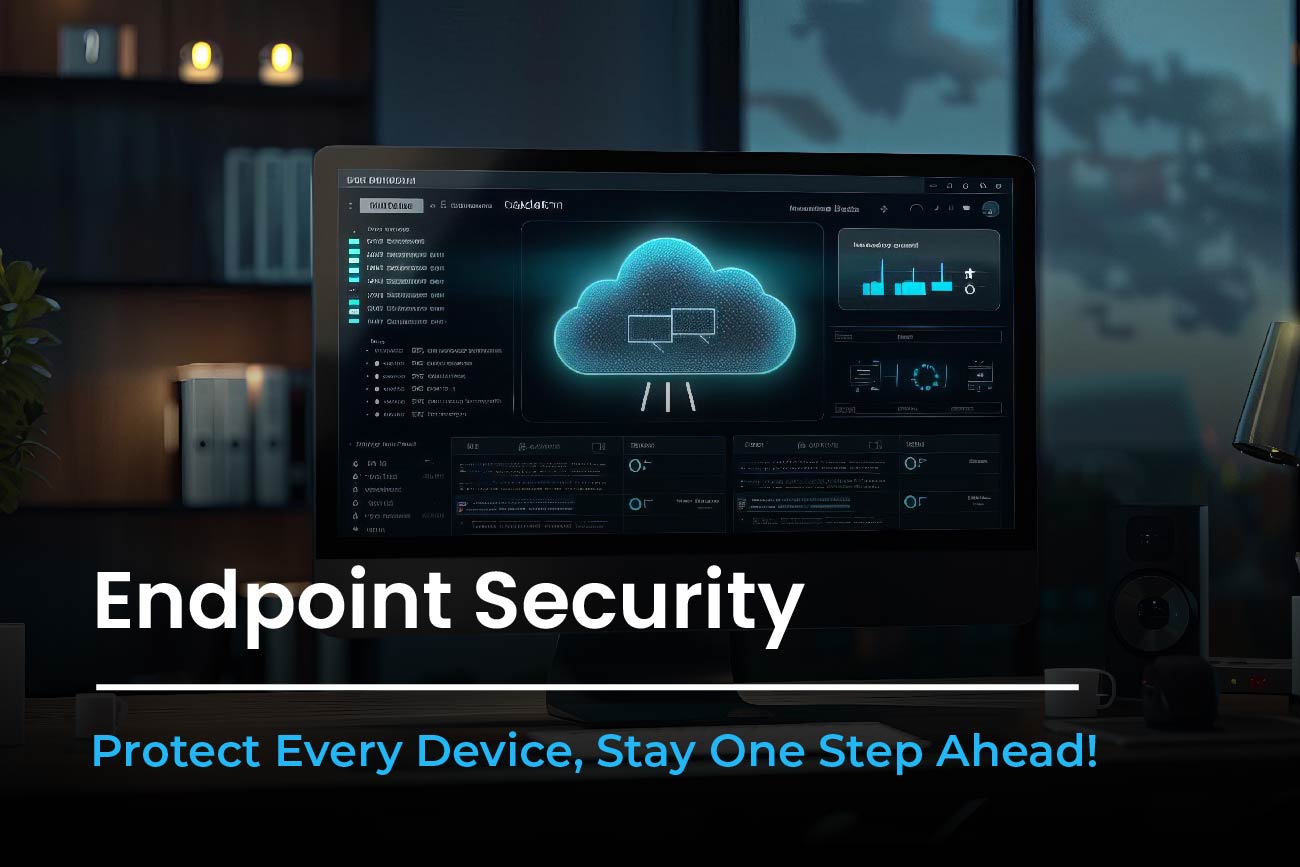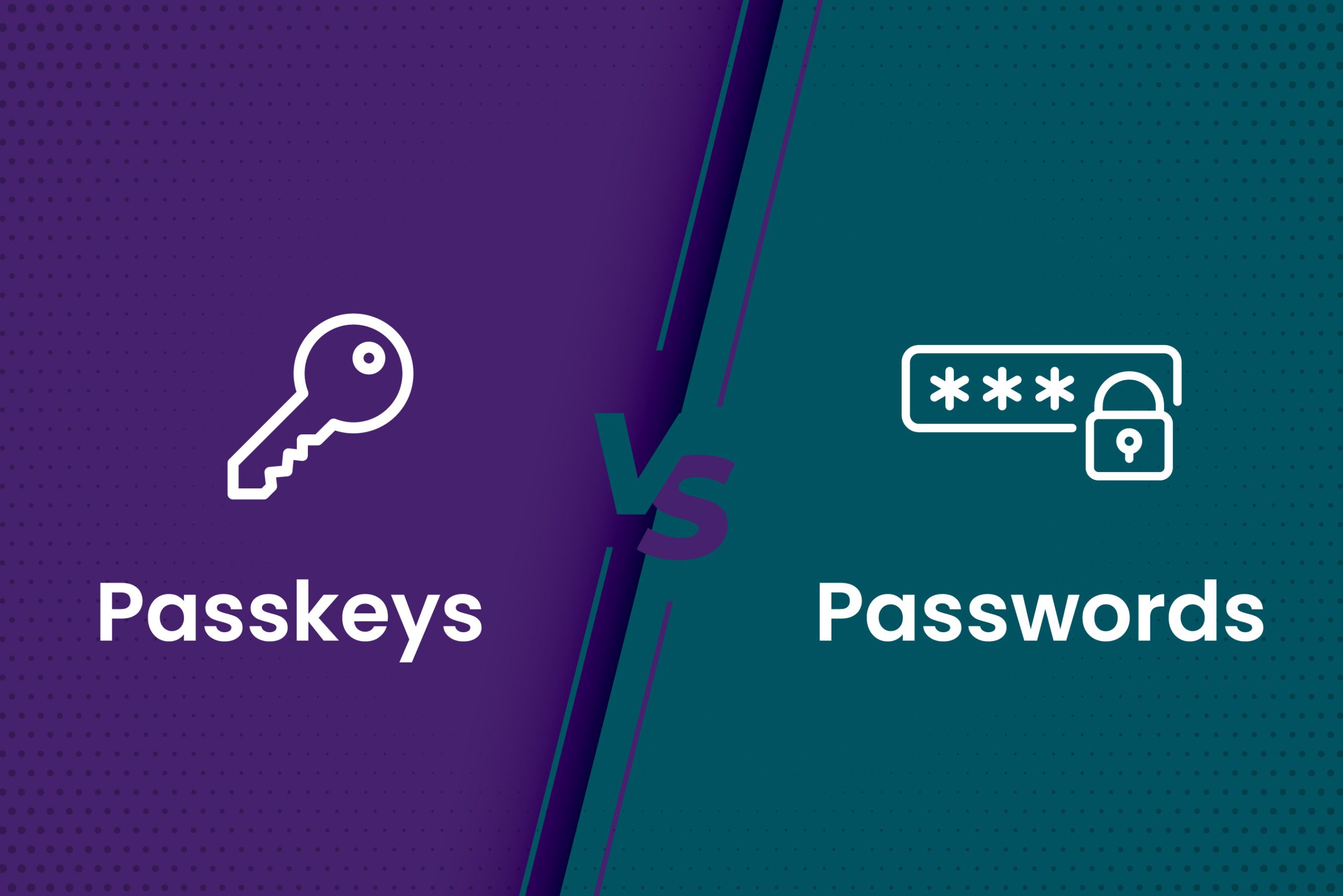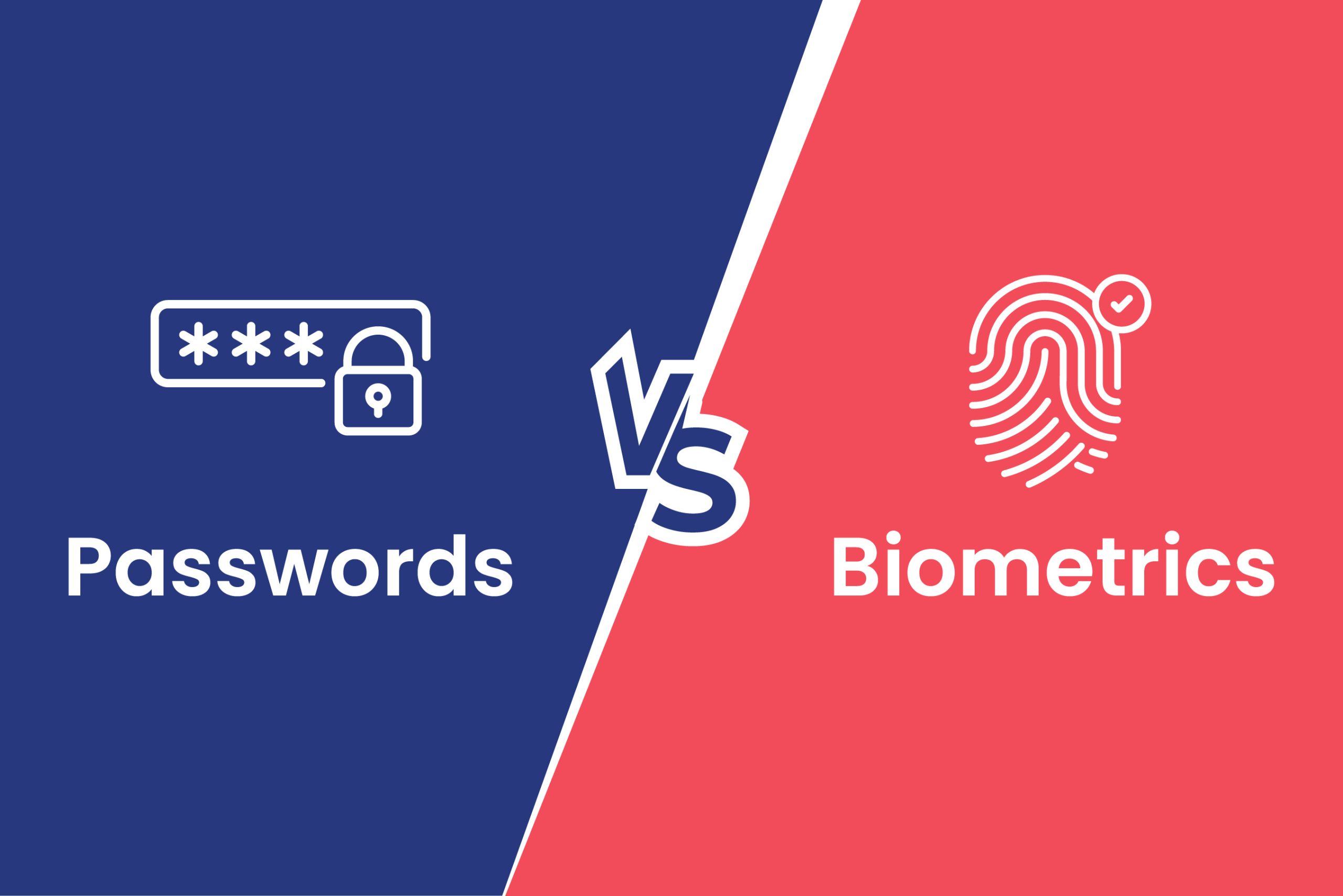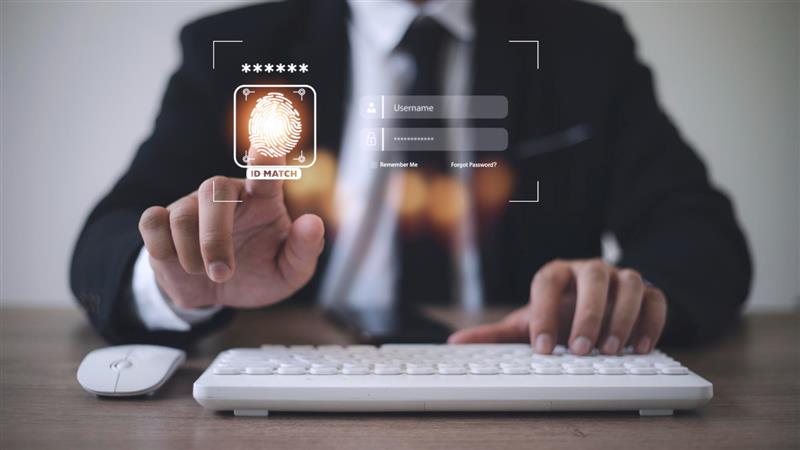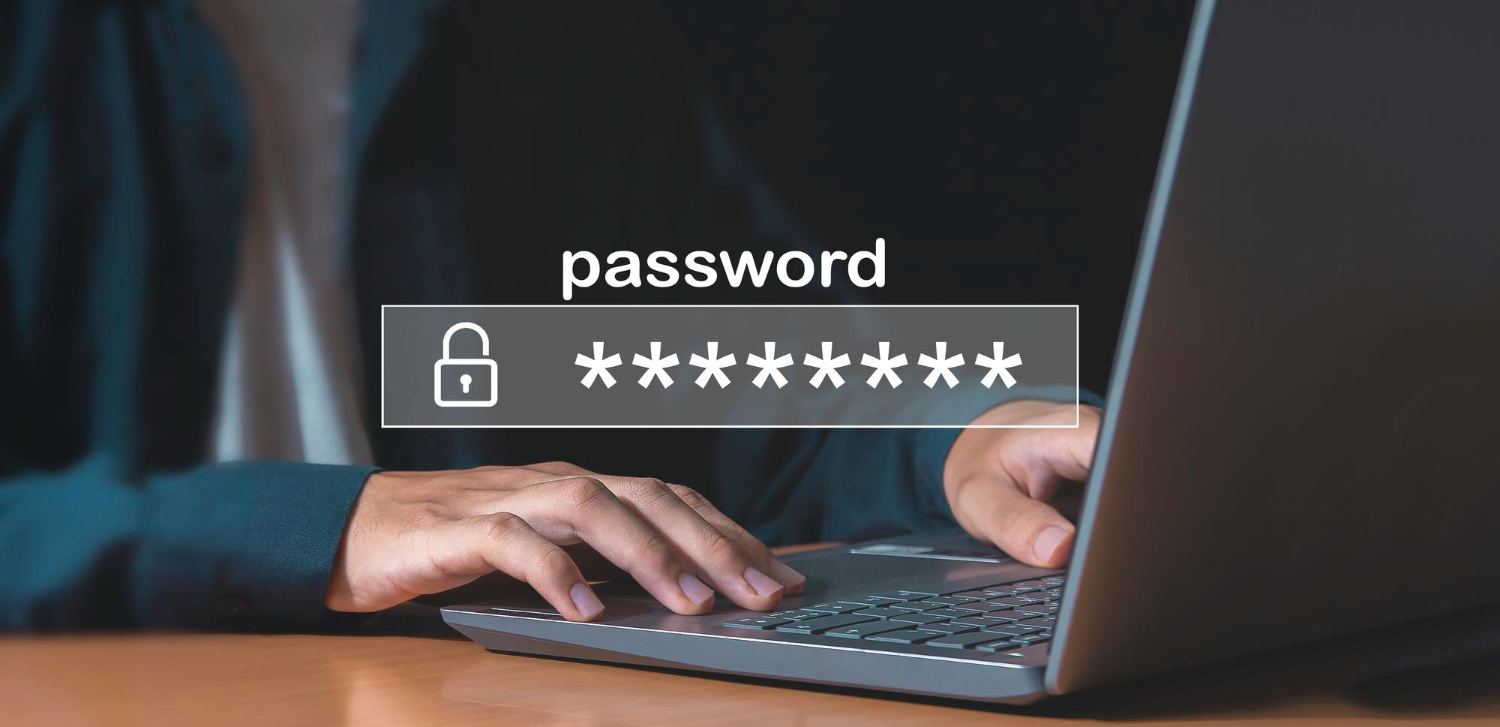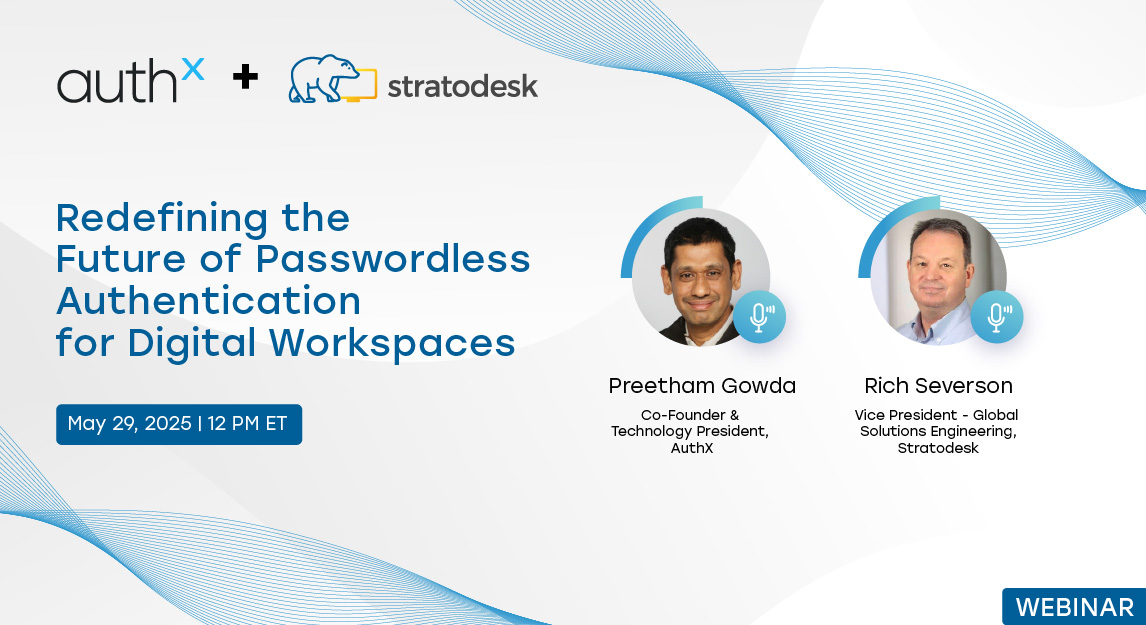What is endpoint security?
Endpoint security is the practice of protecting endpoints, or access points for end-user devices such as desktops, laptops, and mobile devices, from malicious actors. Given that 83% of malware threats are stored in locations such as %temp%, %appdata%, and %desktop%, endpoint security play a critical role in monitoring and protecting these vulnerable areas. Endpoint security solutions protect these endpoints on a network or in the cloud from various security threats. These systems are designed to quickly detect, analyze, and prevent threats, ensuring the safety and security of data and devices.
What’s considered an Endpoint?
Endpoints connect to a network and serve as communication and data exchange entry points. These devices can include:
- Desktops and Laptops : Personal computers used by employees.
- Mobile Devices : Smartphones and tablets are used for personal and business purposes.
- Servers : Machines that provide data and services to other computers on the network.
- IoT Devices : IoT devices include smart sensors, wearables, and connected home devices.
- Printers and Scanners : Office equipment that can be network-connected.
- Workstations : High-performance computers used for specialized tasks.
How endpoint protection works?
Endpoint protection works by deploying software agents on individual devices and integrating with network-level defenses. These agents actively scan for threats and provide real-time protection, while network security measures monitor and block potential threats before they reach the devices. A centralized management console allows administrators to enforce security policies, monitor both device and network activity, and quickly detect and respond to incidents. This dual approach ensures comprehensive protection, safeguarding both the device and the broader network.
Robust authentication mechanisms are also vital for adequate endpoint cybersecurity. Authentication solutions, such as multifactor authentication (MFA) and single sign-on (SSO), help ensure that only authorized users can access endpoints and sensitive data. By verifying user identities before granting access, these authentication measures add a layer of security, preventing unauthorized access and reducing the risk of data breaches.
Key components of Endpoint protection
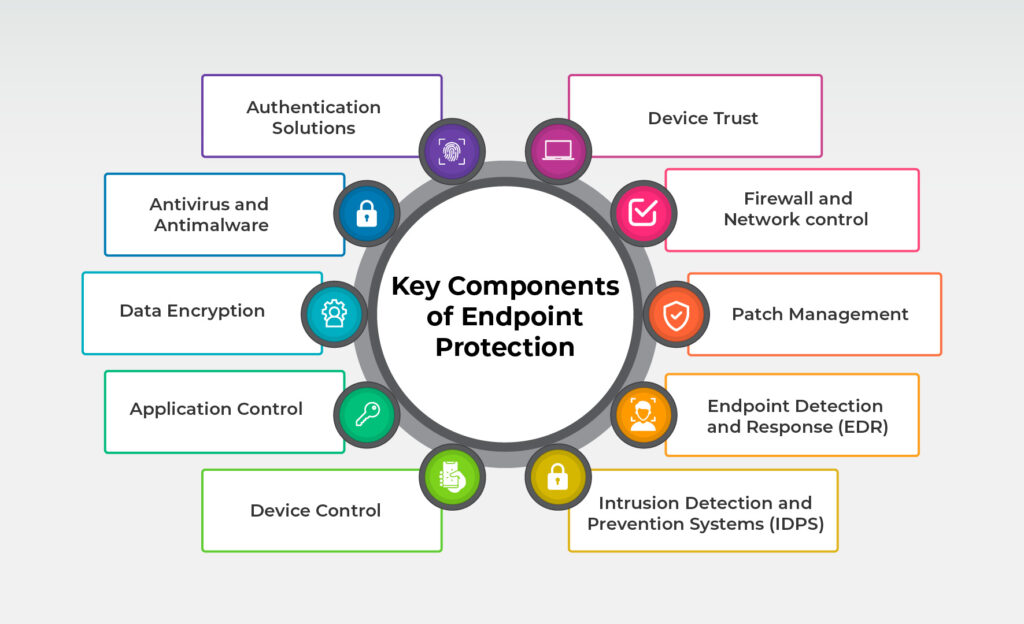
Effective endpoint protection typically includes several key components to ensure comprehensive security:
1. Authentication Solutions
Strong authentication methods such as Multifactor Authentication (MFA) and Single Sign-On (SSO) ensure that only authorized users can access endpoints.
- Multifactor Authentication (MFA): MFA requires users to provide two or more verification factors to gain access, which may include something they know (password), something they have (security token), or something they are (biometric verification).
- Single Sign-On (SSO): SSO allows users to log in once and gain access to multiple applications without being prompted to log in again at each one. This reduces the attack surface by limiting the number of credentials that need to be managed.
2. Device Trust
Ensuring that devices accessing the network are trusted and compliant with security policies is critical.
- Device Compliance: This involves checking whether a device has the latest security updates, antivirus definitions, and configurations before it can connect to the network.
- Trusted Devices: Device trust mechanisms assess the security posture of a device, ensuring that only known, compliant, and secure devices are granted access to sensitive data and systems. Non-compliant devices can be quarantined or restricted to specific network segments to minimize risk.
3. Antivirus and Antimalware
Antivirus and antimalware tools are essential for detecting, blocking, and removing malicious software that could compromise endpoints.
- Real-Time Scanning: Continuously monitors files and programs as they are accessed, identifying and neutralizing threats on the fly.
- Behavioral Analysis: Identifies and blocks new and unknown threats by analyzing the behavior of applications and files.
4. Firewall
Firewalls act as the first line of defense, controlling the flow of network traffic between trusted and untrusted zones.
- Network Segmentation: Firewalls can divide networks into segments, limiting access to sensitive areas and reducing the impact of potential breaches.
- Advanced Threat Protection (ATP): Modern firewalls often include ATP capabilities, which help detect and block sophisticated threats.
5. Intrusion Detection and Prevention Systems (IDPS)
IDPS tools monitor network traffic for suspicious activities and take preventive action to block potential intrusions.
- Signature-Based Detection: Uses predefined attack patterns to identify known threats.
- Anomaly-Based Detection: Identifies unusual patterns of behavior that may indicate a new or unknown threat, offering protection against zero-day exploits.
6. Data Encryption
Encrypting data both at rest and in transit is vital for maintaining confidentiality and integrity.
- Data at Rest: Encryption of stored data ensures that even if it is accessed without authorization, it remains unreadable.
- Data in Transit: Encrypting data as it travels across networks prevents interception and eavesdropping during transmission.
7. Patch Management
Regularly updating software and systems with the latest security patches is essential for closing vulnerabilities that attackers could exploit.
- Automated Patch Deployment: Centralized systems can automate the deployment of patches, ensuring that all endpoints are up to date.
- Vulnerability Scanning: Tools that scan for unpatched systems can help identify and prioritize critical updates.
8. Application Control
Application control restricts which applications can run on endpoints, minimizing the risk of malware infections.
- Whitelisting: Only pre-approved applications are allowed to run, preventing unauthorized software from executing.
- Application Sandboxing: Isolates applications from critical system components, limiting the damage they can do if compromised.
9. Device Control
Device control involves managing external devices like USB drives and peripherals to prevent data leakage and the introduction of malware.
- USB Port Management: Administrators can disable or restrict USB ports to prevent unauthorized data transfer or the spread of malware through infected devices.
- Peripheral Management: Policies can be set to control the use of other peripherals, such as external hard drives, printers, and scanners, ensuring that only authorized devices are used.
10. Endpoint Detection and Response (EDR)
EDR solutions provide continuous monitoring and automated response capabilities, enabling rapid detection and remediation of threats on endpoints.
- Behavioral Monitoring: EDR tools monitor endpoint activity for suspicious behavior, such as unusual file modifications or network connections.
- Incident Response: When a threat is detected, EDR solutions can automatically isolate affected systems and initiate remediation steps.
11. Network Control
Network control focuses on managing the access and behavior of devices connected to the network, ensuring that endpoints interact securely.
- Network Access Control (NAC): NAC solutions enforce security policies across the network, ensuring that only compliant devices can connect.
- Microsegmentation: This technique divides the network into smaller, isolated segments, limiting the spread of threats and providing granular control over network traffic.
- Network Traffic Analysis (NTA): Continuously monitors and analyzes network traffic to detect and respond to suspicious activities, reducing the risk of network-based attacks.
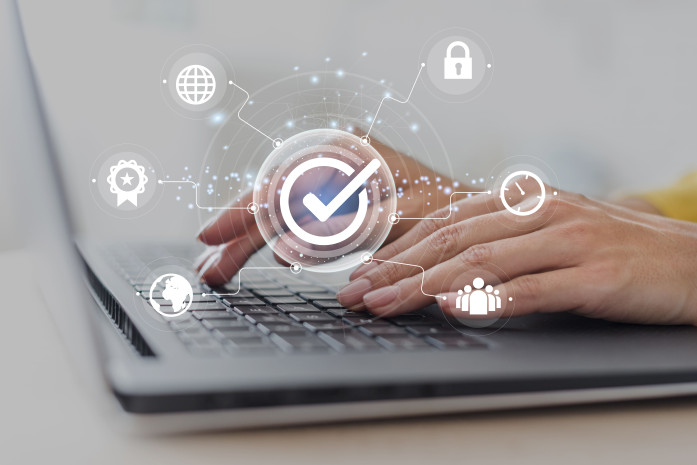
Why authentication solutions are important for Endpoint security?
Authentication solutions are vital for endpoint security because they verify the identity of users and devices, preventing unauthorized access. Organizations can significantly enhance their security posture by implementing passwordless multifactor authentication (MFA) and single sign-on (SSO) solutions. These solutions ensure that only authorized users can access sensitive information and systems.
Exploring AuthX's advanced Endpoint security solutions
AuthX offers advanced endpoint security solutions to protect your organization from threats. Our solutions include:
Passwordless MFA: Enhance your security posture by eliminating weak and easily compromised passwords. Our passwordless multi-factor authentication (MFA) solution provides a more secure and user-friendly alternative, reducing the risk of credential-based attacks and improving overall user experience.
Adaptive Authentication: Tailor your security measures to match the risk level of each access request. Our adaptive authentication solution dynamically adjusts security protocols based on contextual factors like user behavior, location, and device health, ensuring robust protection customized for each situation.
Comprehensive Endpoint Management: Achieve complete visibility and control over all endpoints within your organization, including desktops, laptops, and mobile devices. Our solution helps prevent vulnerabilities by monitoring and managing device security, ensuring that all endpoints comply with your security policies.
Device Trust: Strengthen your network security by verifying and managing the trustworthiness of all devices accessing your system. Our Device Trust feature ensures that only devices meeting your security standards are granted access, reducing the risk of unauthorized or compromised devices.
Least Privilege Management: Implement endpoint least privilege policies to minimize exposure and reduce potential attack surfaces. By ensuring that users and devices have only the necessary level of access, our solution helps mitigate the impact of security breaches and internal threats.
Benefits of Endpoint Security
Enhanced Protection : Robust endpoint security shields devices from various threats, including malware and ransomware. Continuous monitoring and real-time defense mechanisms prevent cyberattacks from penetrating the network. This multi-layered protection ensures comprehensive coverage against evolving threats.
Data Security : Endpoint security measures protect sensitive data through encryption and stringent access controls. Restricting unauthorized access safeguards critical information from breaches. This ensures that valuable data remains confidential and secure from malicious actors.
Regulatory Compliance : Implementing endpoint security helps meet industry-specific and government regulations, such as GDPR and HIPAA. Compliance with these standards avoids legal penalties and demonstrates a commitment to protecting sensitive information. It ensures that your organization adheres to necessary data protection requirements.
Operational Continuity : Strong endpoint security minimizes disruptions caused by security incidents. Preventing and swiftly responding to threats ensures that business operations remain uninterrupted. This helps maintain productivity and reduces the impact of potential security breaches on daily operations.
User Trust : Effective endpoint security builds confidence among customers and stakeholders by demonstrating robust protection measures. When users know their data is secure, it enhances their trust in your organization. This trust is vital for maintaining strong business relationships and a positive reputation.
Cost Savings : Investing in endpoint security prevents financial losses from data breaches, regulatory fines, and downtime. Proactively securing endpoints reduces the likelihood of costly incidents like ransomware attacks and lowers the ongoing costs of maintaining security.
Improved User Experience : Endpoint security that integrates with existing systems enhances the user experience. By implementing user-friendly measures like SSO and MFA, organizations ensure efficient, secure access without burdening users, boosting satisfaction and productivity.
The role of Endpoint security in safeguarding mobile devices
Mobile devices are particularly vulnerable to cyber threats due to their portability and frequent use outside secure networks. Endpoint security for mobile devices involves:
- Encrypting data stored on the device.
- Implementing robust authentication methods.
- Monitoring for suspicious activities and malware.
- Enforcing security policies remotely.
Conclusion
Endpoint security is critical to a robust cybersecurity strategy. Organizations can protect their devices, data, and networks from ever-evolving threats by implementing advanced endpoint security measures. AuthX offers comprehensive endpoint security solutions tailored to your organization’s unique needs. Contact us today to learn how we can help you enhance your endpoint security and safeguard your digital assets.

